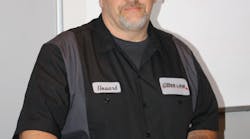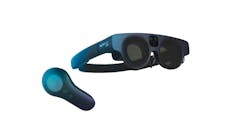Ask the Expert: What does a pre-alignment check entail, and why is it important to tire life for your customers?
Q: What does a pre-alignment check entail, and why is it important to tire life for your customers?
A: Consistently practicing thorough pre-alignment inspections can lead to an increased bottom line for your company. When you perform these checks, you significantly decrease your chances of overlooking a problem that could cause your customer's vehicle to have issues later, which could, in turn, lose business for you.
The first step in any pre-alignment inspection is to check and record the "cold" inflation pressure on each tire, typically after the vehicle has been at rest for several hours. Both steer tires should have roughly the same pressure, as should all drive tires and all trailer tires when compared to each other.
Remember: No matter how precisely aligned the camber, caster, toe and tracking angles — the vehicle will still pull if there is uneven tire pressure.
Next steps involve checking the tires for irregular wear, including fast wear, feather wear, cupping, diagonal wear, rapid shoulder wear and one-sided wear. The type of tire wear patterns can indicate specific alignment problems; for example, a toe condition can quickly and easily be diagnosed if a technician notices steer tire feather wear to be in the same direction across the axle.
Also, make sure to check for problems like damaged springs, worn king pins, loose bearings or worn steering linkage in the suspension.
While all inspections may not be necessary, properly executed checks provide a courtesy to the customer that may increase satisfaction and confidence in your business. It also ensures that each and every vehicle serviced in your bay is evaluated in the same way.
Tools for your shop, including the Bee Line LC7500 Computer Alignment System, help utilize sensors and lasers to precisely gauge toe, tracking, caster and camber for a vehicle that is aligned better than new. This system can be calibrated in a few minutes right in your shop and minimizes downtime, thus increasing your profit potential.
Information provided by: Bee Line




